She’s the Smartest Woman Who NEVER Got Kissed.
One can wonder what there is about What a Woman! that deserves mention, certainly on any extended level, a review, say. Not very much, really. That it might provide, under the proper conditions, some degree of entertainment on a cold winter evening is its greatest attribute, though perhaps “strongest” is a better word, since any form of “great” seems inappropriate here.
Winter or not, What a Woman!—yes, with the exclamation mark—was only one of a warm, cuddly flurry of romantic comedies that appeared during the 1930s and the first half of the ’40s. Whether intentional or not, they were diversions and morale boosters during the Great Depression and World War II.
There were a number of teams of varying sophistication: the best were Myrna Loy and William Powell as amateur sleuths, Jeanette MacDonald and Nelson Eddy as singing lovers, Olivia de Havilland and Errol Flynn in swashbucklers and Westerns and Joan Crawford and Clark Gable as fierce contemporary lovers, Bonnie and Clyde without the guns. Katharine Hepburn and Cary Grant made four flicks together, two of them comic classics, Bringing Up Baby (1938) and The Philadelphia Story (1940).
Which brings up a less well known, even obscure, “team”—and with good reason—and that’s the four films made by Rosalind Russell and Brian Aherne: Hired Wife, My Sister Eileen, Rosie! and, of course, What a Woman! That the stars were never meant to be paired and only appear together through production coincidences, is perhaps apparent. On most occasions, the chemistry never ignites, as it instantly does, say, between Loy and Powell in their first Thin Man movie, or between de Havilland and Flynn in their first, Captain Blood.
Why Columbia Pictures thought it necessary, or how the two screenwriters, Therese Lewis and Barry Trivers (from Erik Carell’s story), were coerced into dropping Russell into this less-than-scintillating comedy is a vague mystery. Maybe it was an attempt to duplicate Russell’s truly great performance in that same studio’s His Girl Friday (1940), her masterpiece in the genre.
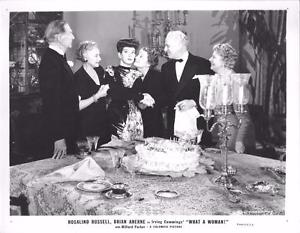 The director in that film (Howard Hawks) and those screenwriters (Ben Hecht and Charles MacArthur) were far superior to the director (Irving Cummings) and his writers in What a Woman! In any case, this follow-up attempt to reclaim a past glory was futile, especially when, already from the starting gate, things look inauspicious, to say the least.
The director in that film (Howard Hawks) and those screenwriters (Ben Hecht and Charles MacArthur) were far superior to the director (Irving Cummings) and his writers in What a Woman! In any case, this follow-up attempt to reclaim a past glory was futile, especially when, already from the starting gate, things look inauspicious, to say the least.
One of the few pluses about What a Woman! is Joseph Walker’s slick B&W cinematography, which nimbly keeps up with Russell’s lickety-split race throughout the film, perhaps her effort to get this “thing” over as soon as possible. Walker avoids any blurs as she does those one-minute-mile sprints past his camera. Her tempo, though, fits well her established screen persona, clearly reiterated here. She’s once again the high-strung, highly motivated business woman too busy for love, who can demonstrate a kiss to the would-be actor she’s tutoring, send him into ecstasies of puppy love and walk away as if she had just brushed her teeth.
Although it’s only the potential that is there, another plus is the presence of Brian Aherne—perhaps only the physical presence most of the time—as the actor seems indifferent to it all. While Russell’s energy is kinetic, even seething when she seems stationary, his is lethargic, yielding happily to gravity. He spends most of his time lounging about, masquerading as a piece of furniture in rooms through which Russell dashes. At first his presence surprises her, then she accepts him as just that, a piece of furniture. He makes sofas and chairs his home, as if expecting to be around a long time. Or is he waiting for this woman to pay him some attention, or, more likely, hoping for a revision of the script to arrive?
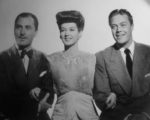 But even under these circumstances, Aherne exudes debonair charm to spare, casually smoking his pipe—it’s amazing what he does with that prop—and clinically observing Russell, biding his time and taking notes for his full critique to follow at film’s end, his delayed confession of love. That he could come to love this woman, and the critique includes enough justifications otherwise, requires a deep analysis, not to mention a sense of incomprehension, that the film doesn’t warrant.
But even under these circumstances, Aherne exudes debonair charm to spare, casually smoking his pipe—it’s amazing what he does with that prop—and clinically observing Russell, biding his time and taking notes for his full critique to follow at film’s end, his delayed confession of love. That he could come to love this woman, and the critique includes enough justifications otherwise, requires a deep analysis, not to mention a sense of incomprehension, that the film doesn’t warrant.
Although Willard Parker had a thirty-five-year screen career, the name may be unfamiliar to most movie fans. Even his face may elude an immediate name association. Over six feet and with fair-haired good looks, he slipped easily into B movies as the occasional male lead, more often the secondary romantic interest. With a limited range, he is not an overly gifted actor and seems dull indeed alongside a Brian Aherne, even in low gear here. Parker is present, however, for a purpose: as the simpleton instigator of getting Russell and Aherne together.
 Columbia could seldom assemble the brilliant array of character actors of an M-G-M or a Warner Bros., but with the help of loan-outs from other studios, a few outstanding faces do enhance What a Woman! Norma Varden, one of Russell’s secretaries and often seen only from the back, is wasted. She had larger roles (von Trapp’s maid in The Sound of Music [1965]) and better luck, if it can be called that, as Tyrone Power’s murder victim in Witness for the Prosecution (1957) and Robert Walker’s strangulation model in Strangers on a Train (1951).
Columbia could seldom assemble the brilliant array of character actors of an M-G-M or a Warner Bros., but with the help of loan-outs from other studios, a few outstanding faces do enhance What a Woman! Norma Varden, one of Russell’s secretaries and often seen only from the back, is wasted. She had larger roles (von Trapp’s maid in The Sound of Music [1965]) and better luck, if it can be called that, as Tyrone Power’s murder victim in Witness for the Prosecution (1957) and Robert Walker’s strangulation model in Strangers on a Train (1951).
Mary Forbes had appeared in over 135 films before a brief stint in television, then one last film as a society woman in Cary Grant’s Houseboat (1958). In What a Woman! she’s a senator’s wife, as is Ann Shoemaker, who played Franklin Roosevelt’s mother in Sunrise at Campobello (1960). Both ladies wasted. Usually a bit player in downtrodden roles, Hobart Cavanaugh ascends to mailman status. Look almost as quickly for Shelley Winters, in her second film, as another secretary.
The plot of the film is time-tested, to say the least. See if this, or a variant on it, doesn’t sound familiar: Reporter Henry Pepper (Aherne) arrives at the office of Carol Ainsley (Russell) to do a sketch for his Knickerbooker magazine. Besides being named the outstanding career woman of the year, she is in the business of creating overnight movie sensations.
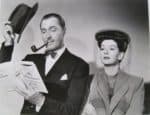 Pepper annoyingly interrupts her in negotiating the movie rights for a new romance novel, Whirlwind. Carol is unaware that the book is quite scandalous, having not read it, but, seeing the author’s photo, she thinks him ideal for the lead in the movie version. Good-looking though he may be, in person Professor Michael Cobb (Parker) is a bookish intellectual, a devotee of Elizabethan literature. Even reading from his own book, he is flat, unemotional and—well, dreadful. But Carol is not the least deterred; she can accomplish anything if she sets her mind to it, and, besides, at her tempo she doesn’t have time to weigh the pros and cons.
Pepper annoyingly interrupts her in negotiating the movie rights for a new romance novel, Whirlwind. Carol is unaware that the book is quite scandalous, having not read it, but, seeing the author’s photo, she thinks him ideal for the lead in the movie version. Good-looking though he may be, in person Professor Michael Cobb (Parker) is a bookish intellectual, a devotee of Elizabethan literature. Even reading from his own book, he is flat, unemotional and—well, dreadful. But Carol is not the least deterred; she can accomplish anything if she sets her mind to it, and, besides, at her tempo she doesn’t have time to weigh the pros and cons.
Carol takes him to New York for training and sprucing up—in charm, manners and, of course, in acting, which puts them both in proximity to Henry. Never put off by her indifference toward him, Pepper believes that this Cobb fellow just might bring out the heart in Carol, if she has one, and convinces Michael that he is in love with her. The two begin dating, and Carol, afraid he might renege on his movie contract, feigns love for him. She even accepts his marriage proposal when he finds her hiding out from him.
Henry has been following all this with his ever-presence and his comments, becoming something of a referee or a one-man Greek chorus. Sensing that even Carol’s heart couldn’t be cold enough to lead a man on when she doesn’t love him, he presses the matter, agreeing to be Michael’s best man. He has called her bluff, and results come soon enough. Angered by Henry’s move, she confronts him, only to be confronted in return. He tells her she’s only “a ten percent woman” and kisses her. The audience has waited a long time for their first kiss. (Or have they—really?!) She promptly slaps him and just as promptly turns and cancels the wedding, then rushes into his arms.
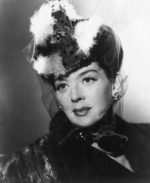 Rosalind Russell’s career, post-What a Woman!, would maintain a surprising equilibrium and at times reach some impressive heights. She assumed more diverse roles, most of them suitable to an actress whose glamour years were behind her. She is a frustrated spinster school teacher in Picnic (1955); the title character in Auntie Mame (1958); an unhappy wife stirred by the arrival of a handsome tutor, Maximilian Schell, in Five Finger Exercise (1962); a determined stage mother in the musical Gypsy (1962); and a nun in an outrageous comedy, The Trouble with Angels (1966), followed by a sequel (1968).
Rosalind Russell’s career, post-What a Woman!, would maintain a surprising equilibrium and at times reach some impressive heights. She assumed more diverse roles, most of them suitable to an actress whose glamour years were behind her. She is a frustrated spinster school teacher in Picnic (1955); the title character in Auntie Mame (1958); an unhappy wife stirred by the arrival of a handsome tutor, Maximilian Schell, in Five Finger Exercise (1962); a determined stage mother in the musical Gypsy (1962); and a nun in an outrageous comedy, The Trouble with Angels (1966), followed by a sequel (1968).
Sadly, Brian Aherne, more than Russell, is the greater loser in What a Woman! He was a good enough actor, and much underestimated throughout most of his career, to know he could have done better. His days as a leading man, and that pinnacle when he was Oscar-nominated for Best Supporting Actor for Emperor Maximilian in Juarez (1939), would be behind him in another five movies in about as many years. Then it would be mostly television, with the occasional film. Character roles would ensue—the prosecutor in Alfred Hitchcock’s I Confess, captain of the doomed liner in Titanic (both 1953) and two King Arthur portrayals in Prince Valiant (1954) and Sword of Lancelot (1963).
Poignantly, as if enacting scenes from his own life, seven years before his last screen appearance and fifteen before his death in 1986, Brian Aherne’s charm and gentlemanly aura were still intact—prominently—in an episode of TV’s Twilight Zone. As Booth Templeton, he is a faded stage actor who lives on bit parts and memories of his glorious past, which, in a series of flashbacks to the 1920s, he discovers wasn’t so wonderful after all.
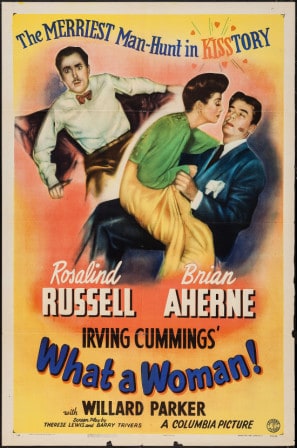
Sounds like one Rosalind Russell film I won’t be seeking out. I recently saw that Twilight Zone episode with Brian Aherne. Just one of the many good stories in this series.
Greetings from the Pure Entertainment Preservation Society! This is a fine article. I saw that you mentioned the famous Hollywood team Jeanette MacDonald and Nelson Eddy, so I would like to invite you to join PEPS’s upcoming blogathon.
I, Rebekah Brannan, have not participated much in the blog world in the past, but I intend to become more involved now.
I would like very much for you to participate in my upcoming blogathon, The Singing Sweethearts Blogathon, which will be my first real participation in PEPS. This blogathon, which will be hosted around Valentine’s Day, is celebrating the famous singing team Jeanette MacDonald and Nelson Eddy.
You can read the rules of the blogathon at: https://pureentertainmentpreservationsociety.wordpress.com/2017/12/20/ring-the-assembly-bell-here-comes-the-singing-sweethearts-blogathon/. If you want to join, please comment and tell me your topic, if you have chosen one. I hope you’ll join me in honoring this brilliant team and the holiday of love!
Joyfully,
Rebekah Brannan